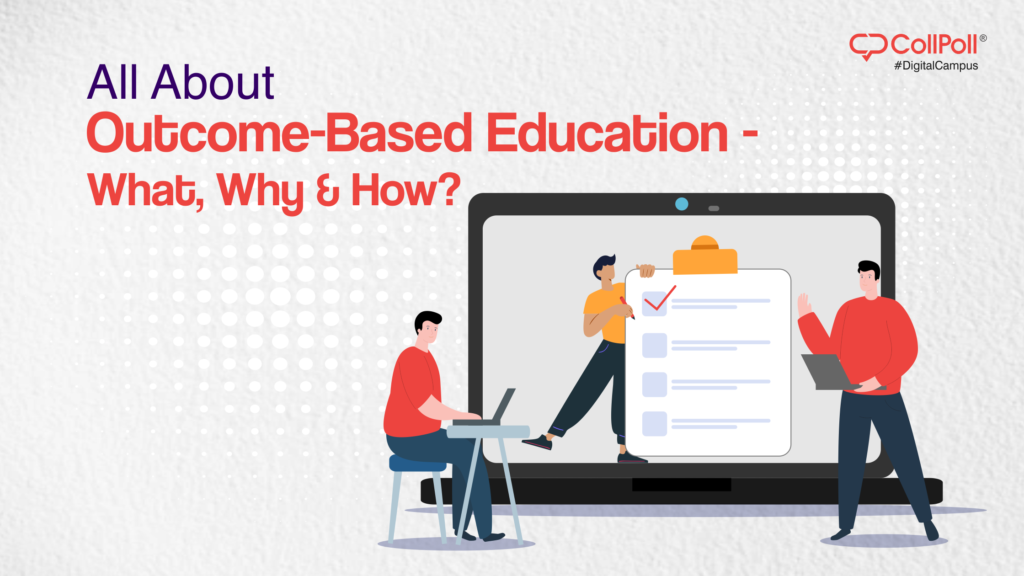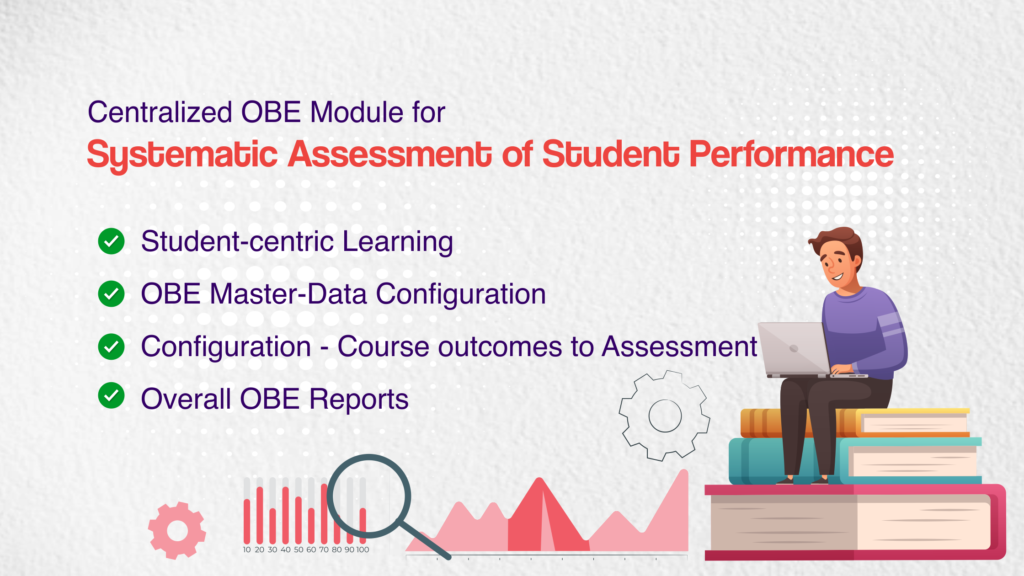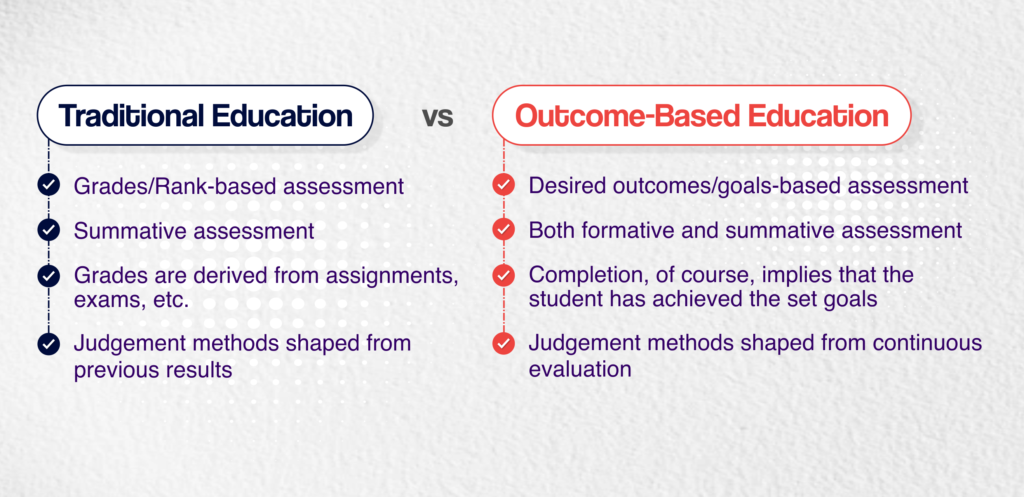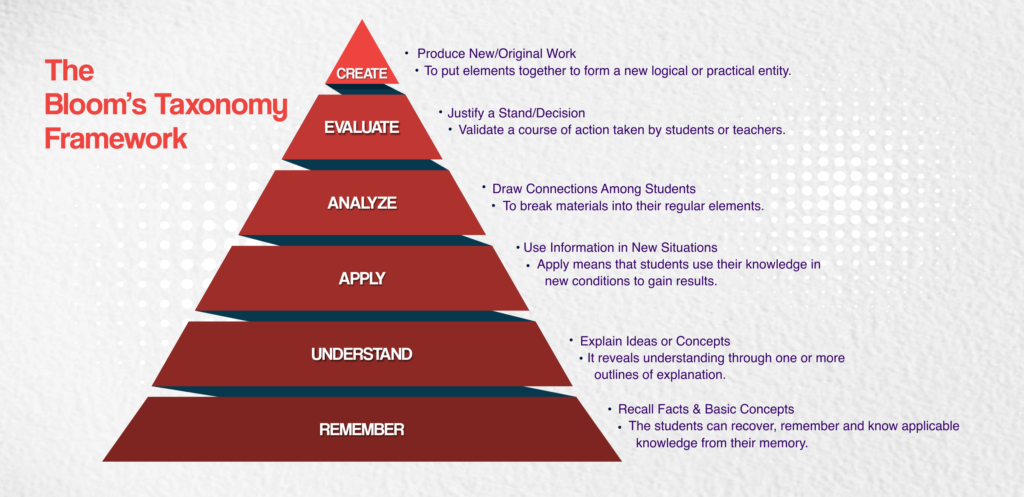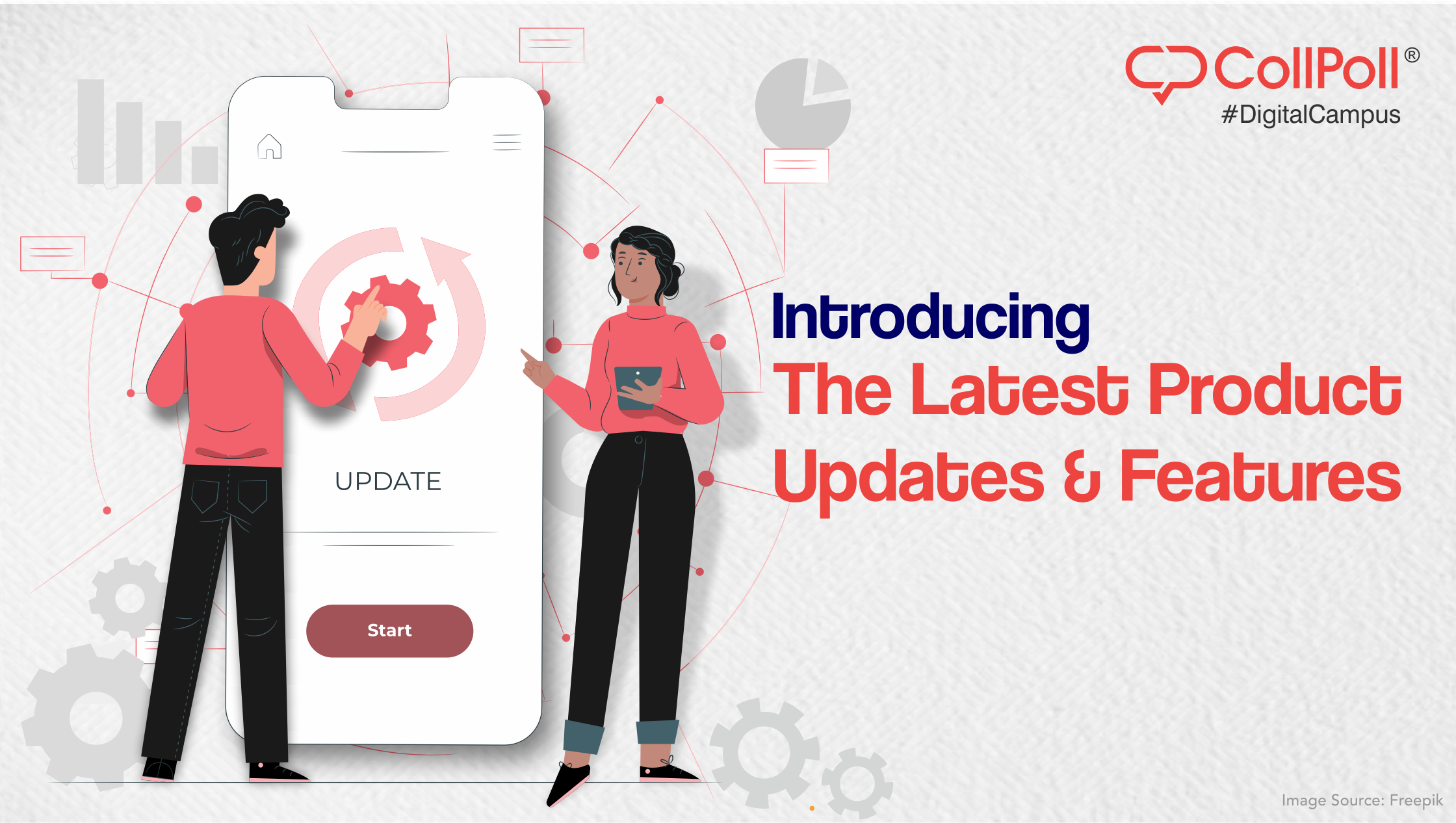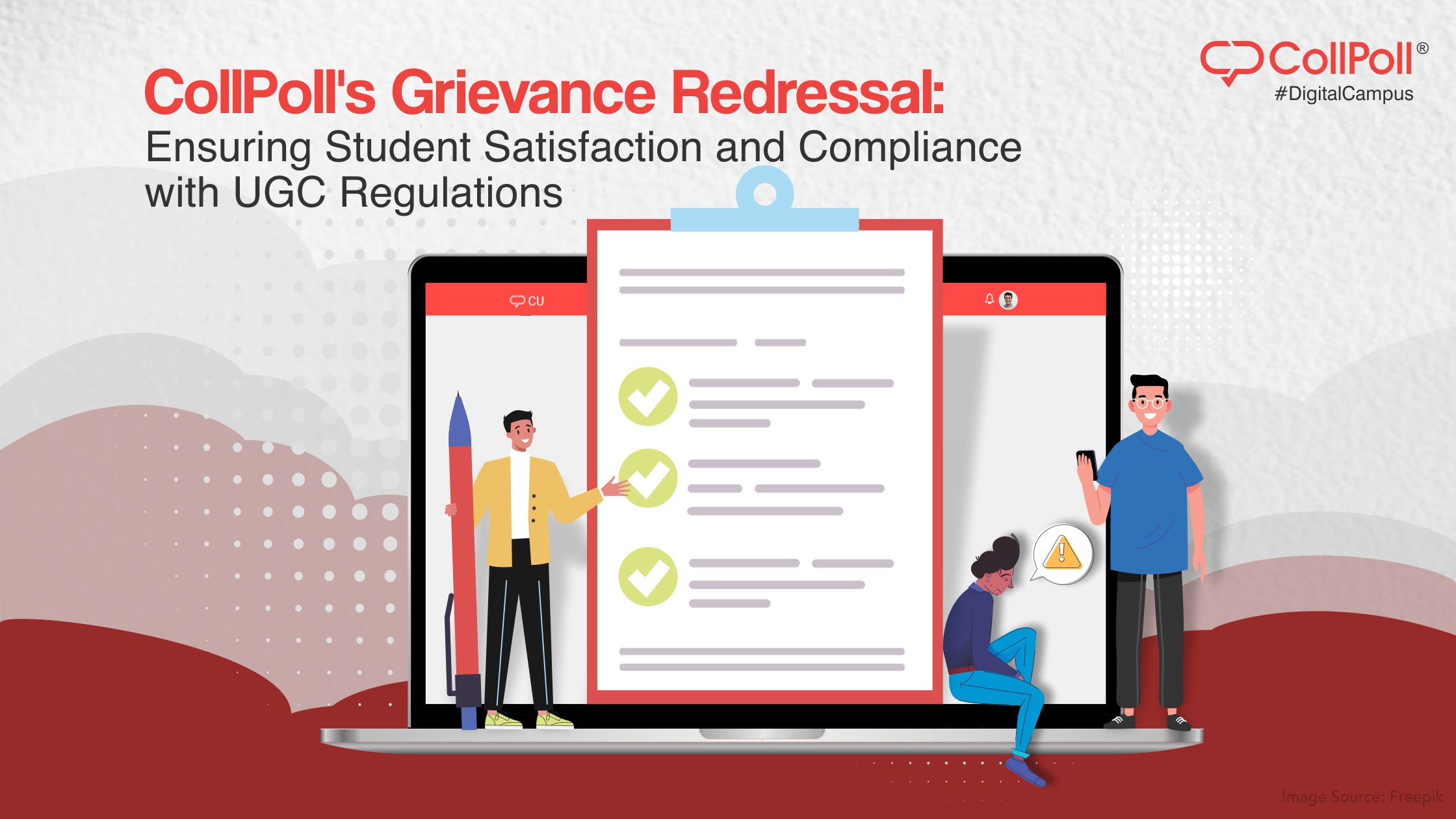Today, the use of technology is growing rapidly in all sectors. To cope with this technological development, graduates must have a high skill set like the ability to adapt to new technology quickly and communicate with others effectively, problem-solving, etc. Learning these skills using traditional classroom teaching techniques can be quite tough and tedious. Hence, an effective education system is required to meet these requirements.
Outcome-Based Education is one such methodology where all the parts and aspects of education are focused on the outcomes of the course.
What is Outcome-Based Education?
Outcome-Based Education focuses on developing professionally and socially competent students. As this personalized learning model is tailored to student’s preferences, every institution should have a unique OBE framework to help students develop so they can excel in their desired profession after graduation. Moreover, it can increase the rate of regular quality improvement mechanisms.
The students enroll in courses with a specific goal in mind, such as developing skills or gaining knowledge and must achieve the goal by the end of each course. There is no particular method or time limit for learning. The students have the freedom to learn as per their choice. In addition, faculty members, moderators, and instructors guide the students toward meeting the target outcomes.
Why Choose Outcome-Based Education For Your Institution?
In the past few years, there has been a constant focus on enhancing the quality of higher education. Colleges and Universities are introducing innovative educational programs focused on improving students’ achievements, professional growth, and overall skills & knowledge.
After a plethora of debates and several discussions, experts have concluded that high-quality education is directly related to outcomes that demonstrate learning. Of course, one can evaluate this after completing the academic program but learning mainly comprises a combination of knowledge, competence, and orientation – three key factors that represent the quality of higher education.
Here’s how your institution can benefit from a good OBE framework:
-
Boosting Skills & Marketability
Education serves innumerable purposes, including leadership qualities, character building, conceptual training, and intellectual awareness. However, the most significant pursuit of an academic degree lies in cultivating the right skills for a student to support a rewarding career. Outcome-based learning experiences allow students to develop industry-relevant skills so they can enjoy higher marketability. It enriches them with marketable skills to enjoy career advancements.
-
Achieving Clarity of Capabilities
In order to devise learning strategies that benefit students and help them advance academically, clarity is essential. Learners are more likely to focus on improving and overcoming their weaknesses when they understand their capabilities.
Outcome-Based Educational experiences offer transparency around the capabilities of each student. Thus, allowing both the students and teachers to understand their needs, creative talents, strengths & weaknesses, and leadership management. This valuable insight helps students take charge of their own learning experiences and outcomes.
-
Student Centric Learning
Outcome-Based Education is a dynamic approach. Instead of teaching to a standard, it gives the flexibility to students to master different concepts at their own speed without any barriers. OBE develops critical thinking capabilities, research skills, and the ability to connect seemingly different subjects. Basically, students learn how to make connections between subjects that are usually taught separately.
-
Enhanced Participation
OBE is geared toward delivering the desired outcomes for a course. Additionally, it promotes the involvement of students by allowing them to undertake self-learning. This increases student engagement and participation in respective activities, as they are accountable for the course material they are learning.
-
Better Understanding
Rather than focusing on the content of an educational program, Outcome-Based Education focuses on students’ learning outcomes. The emphasis is on achieving a certain goal specified by a curriculum with vast learning opportunities. All classes and opportunities must lead to the achievement of specific outcomes. As a result of this approach, faculty members can also adjust their roles and activities in order to achieve these desired outcomes.
-
A Wealth of Teaching Techniques
Several colleges and universities adhere to strict guidelines regarding curriculum and teaching methods. This makes it incredibly challenging for faculty to ensure an inclusive, and mentally stimulating learning experience. OBE liberates the learning experience from all such barriers, allowing both students and teachers to shine.
It promotes collaborative learning by eliminating all restrictions and creating a learning model that is strikingly transparent. Thus, allowing students to actively collaborate with their teachers in defining goals, learning priorities, and aspirations.
Measures to Improve the Quality of Education with OBE
Considering the scope of OBE, we have listed 14 ways to enhance education through outcome-based education software.
-
Program Educational Objectives (PEO)
To evaluate student achievements, PEO can be assessed for a longer duration. It is what graduates expect to attain in their career within 4-5 years once completing their graduation degree. It is also based on the answers of stakeholders to online questionnaires. This outcome-based learning technique reveals the level of satisfaction of students with their achievements in academic programs.
-
Graduate Attributes (GA)
General Attributes of students include their core skills, generic attributes, transferable skills, employability, and soft skills. Leveraging curriculum management software for OBE education allows you to map the attributes of students according to the curriculum design.
-
Student Learning Outcomes (SLO)
OBE learning defines what students can attain through their academic learning experience. The term includes all the ideal attributes of graduates, including their vision, mission, institutional results, and goals, which can be the basis for developing their program outcomes. The three primary categories of learning outcomes are generic skills, values & attitudes, and disciplinary knowledge.
-
Program Outcomes (PO)
Students are expected to demonstrate a set of competencies, such as skills, knowledge, and attitudes, known as program outcomes. Colleges map these desired outcomes to their outcome-based curriculum and specific courses that are achieved through assessment and evaluation tools.
-
Course Outcomes (CO)
Course Outcomes consist of the values, skills, and knowledge of learners after the end of a course. These learning outcomes are linked with the course and program outcomes.
-
Syllabus, Unit & Lesson Plan Outcomes
As course outcomes decide lesson outcomes, the college syllabus, unit, and lesson plan must be linked with the learning of every teaching activity. This will bring cohesion and coherence to student learning.
-
Teaching Methods
Using tech-enabled methods to demonstrate pedagogical learning via video lectures, podcasts, and PowerPoint presentations can enhance the learning experience of students. These cutting-edge teaching and evaluation techniques based on technology can empower educational institutions to map their outcomes accurately. Students and teachers can work together to create an OBE curriculum with a visible and clear goal.
-
Assessment & Evaluation Tools
Outcome-based learning model translates to the quality of faculty members. The main objective of teaching is to develop learning competencies in graduates, which is attained through online tests, assignments, quizzes, and puzzles along with course and faculty evaluation.
-
Customizable Rubrics & Marking Schemes
Rubrics are used to assess the writing, communication, critical thinking, and information literacy of graduates. The automated rubrics are efficient standardised score guides that assist evaluators to make the process easier, more consistent, and transparent.
-
Continuous Quality Improvement (CQI)
In higher education, quality is ensured using the Continuous Quality Improvement (CQI) tool that provides critical data to faculty members and administrators through a continuous online assessment and evaluation process. It also gives access to real-time reports, stating the effectiveness of the program objectives, design, and delivery. With digital feedback combined with faculty evaluations, institutions can enhance education quality every year.
-
Outcome-based Education & Accreditation
Accreditation is one of the most efficient ways to improve the quality of education in HEIs and colleges. An accreditation management system provides institutions with automated tools that help them measure their achievements easily. Thus, they can work accordingly to improve the quality of higher education.
-
Student Success
With the paradigm shift from traditional OBE to learner-centred, tech-powered, and result-driven OBE, the focus is now to enhance the performance abilities of students before they complete their graduation. Therefore, OBE principles prioritise structuring colleges, universities, and HEIs to achieve maximum learning outcomes.
-
Constructive Alignment
Constructive alignment, also described as aligning outcomes with multiple curriculum elements, is a unique approach to OBE. It includes mapping competencies, skills, teaching methods, assessments, PEOs, PO & CO to learning outcomes, which foster improved education quality and student achievements.
-
Presenting Outcomes Using Automated Mind Mapping
Mind-mapping triggers and represents complicated ideas to help students with writing, thinking, and decision-making. These auto-generated maps showcase how the curriculum elements are arranged and grouped.
In a nutshell, we can say that integrating an outcome-based education system with academic management software will bring drastic improvements in the quality of education. It makes continuous evaluation easier and increases the chances of career success.
Traditional Education VS Outcome-Based Education
Outcome-Based Education or Standard-Based Education helps institutions measure learning outcomes while enabling students to develop new skills. Thus, preparing them to stand out from their global counterparts. As a result of these factors, education standards can increase and help institutions obtain accreditation from reputable accreditation bodies such as the National Board of Accreditation by improving continuously.
On the contrary, when we talk about the traditional education system, it is highly dependent on theoretical aspects of learning. Instead of developing skills, it repeats the humdrum way of teaching-learning processes. Therefore, the chances of developing new skills or gaining practical knowledge are minimal.
A few key differences between OBE and Traditional Education Systems are:
-
Grading System
Unlike the traditional grading system, OBE doesn’t provide grades to students. These grades don’t emphasize whether the students have learned new skills or gained any practical experience/knowledge. Whereas, OBE focuses on what the students have learned. The assessments are based on desired outcomes/goals. Thus, giving students the opportunity to learn new skills and develop significantly.
-
Curriculum Outline & Design
The traditional education system does not follow ‘Remodeling’ & ‘Restructuring’. The basic aim is to pass on the previous knowledge to the upcoming generation of students. Even the most experienced teachers and professors are concerned about teaching the curriculum and not stretching their lessons beyond the classroom.
While in OBE, the curriculum plays an important role in providing deeper insights to the students. It provides extended opportunities by following a student-centric learning approach. Additionally, the curriculum is designed in such a way that the output to be achieved by the end of the session is decided at the start.
-
Scalability
The traditional education system does not permit institutions to identify the factors that played the role of catalysts in their improvement. However, with the implementation of the OBE framework, every student’s progress can be tracked based on their performance and differential growth at various levels. This also adheres to the education standard set by National Education Policy NEP 2020.
Outcome-Based Education in Relation To Bloom’s Taxonomy
“India’s unemployment rate as of June 2022 was found to be 35.8%”.
This is the reason why – besides gaining academic knowledge, students need to have skills and practical experience as well. Based on Bloom’s Taxonomy Framework, the OBE Framework fills up the learning gaps by covering the following educational areas:
- Knowledge
- Comprehension
- Application
- Analysis
- Synthesis
- Evaluation
CollPoll’s Outcome-Based Education Module To Boost Learning in Your Campus!
Today, students and young professionals often struggle against numerous disadvantages that stem from learning experiences. Modern-day organizations are not willing to hire professionals who require rigorous training to acquire any skills. Outcome-based education learning experiences allow students to increase their marketability, improve skill sets and expand career-related opportunities.
CollPoll’s Outcome-Based Education software conducts regular evaluations, generates attainment reports, and maps the student success rate with an automated system. We simplify the processes of generating huge reports in required formats and secure all the data with robust solutions.
Here’s how we help:
-
OBE Master Data Configuration
Our master data configuration helps administrators define the mission and vision of the institution at both the department and college levels. Furthermore, they can define Program outcomes as the objectives achieved at the end of any specialization or discipline and configure the outcomes effortlessly and easily upload and manage historical data (OBE Schema) of all courses across the institution.
-
Configuring – Course Outcomes to Assessment
The module helps you track outcomes at every level – to keep a track of students’ performance. You can map each lecture with a topic-level outcome, map assignments, quizzes, and external exam papers, and create credits/marks for each mapped question.
-
OBE Reports
To enhance the flexibility of the education system in an institution, our OBE software makes it easier to generate and manage – term-wise course attainment reports, programme attainment reports for each programme batch year with direct and indirect outcomes, a course-wise dashboard to monitor student performance for each course outcomes, and more.
Summing It Up!
Outcome-Based Education transforms the learning experience of students and must be embraced by higher education institutions to enhance the delivery of knowledge & skills. It encourages students to gain knowledge and develop a better thought process and allows teachers to design a curriculum while keeping a tab on students’ growth at every stage.
To know more about our OBE Module, connect with our experts now. They will help you understand the software better and guide you through the implementation process. Give us a call or drop an email now!

